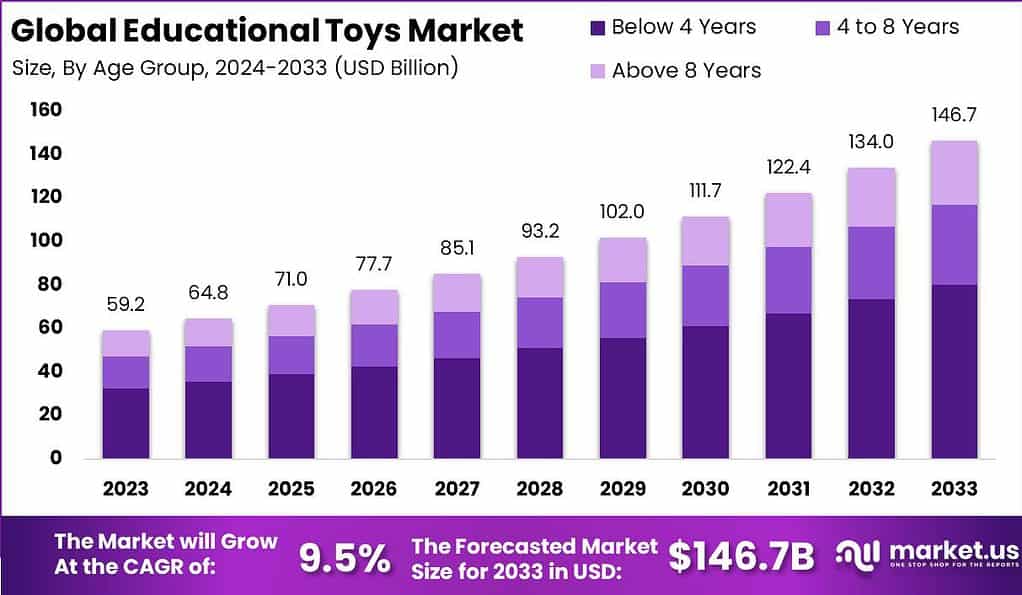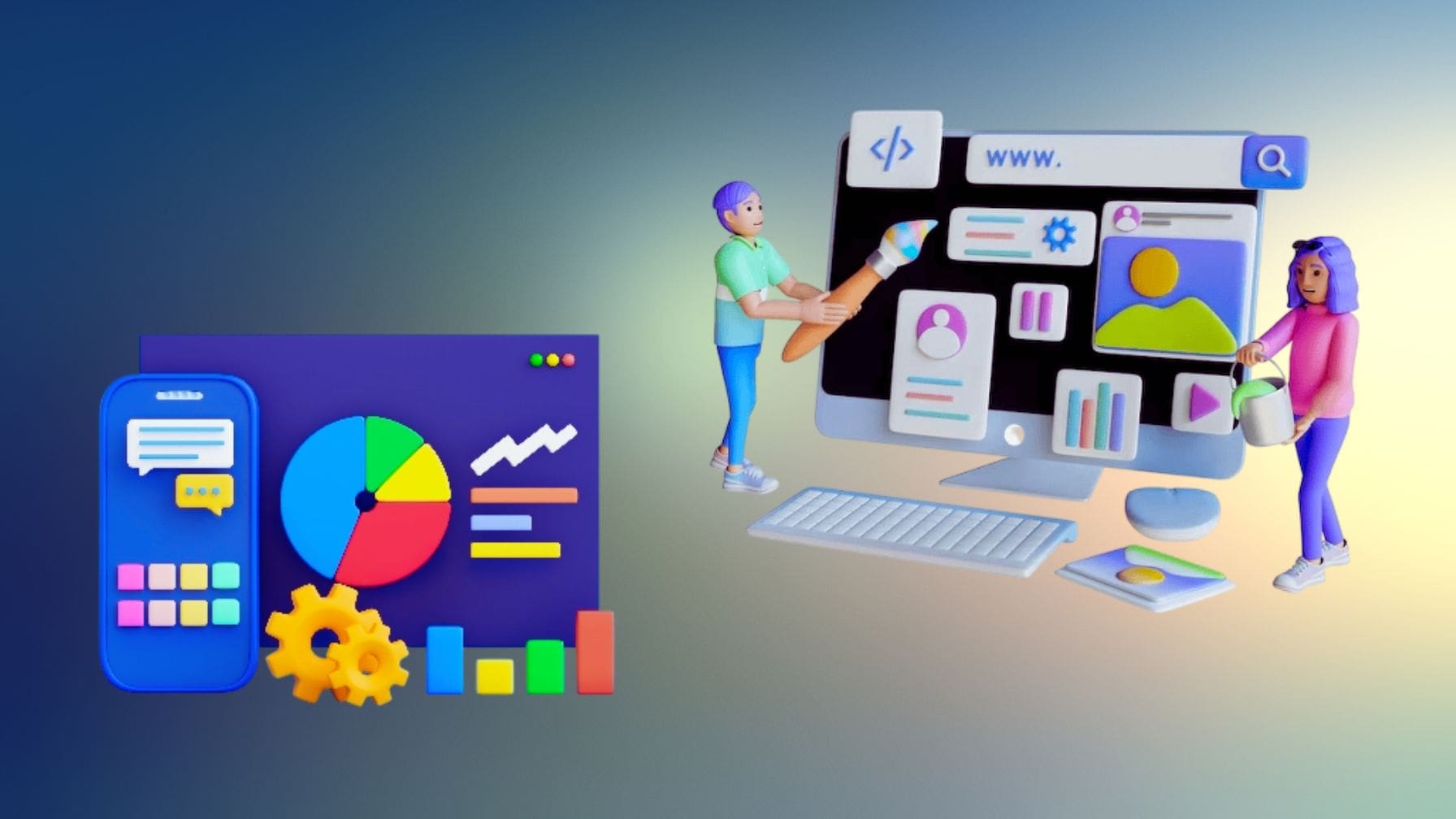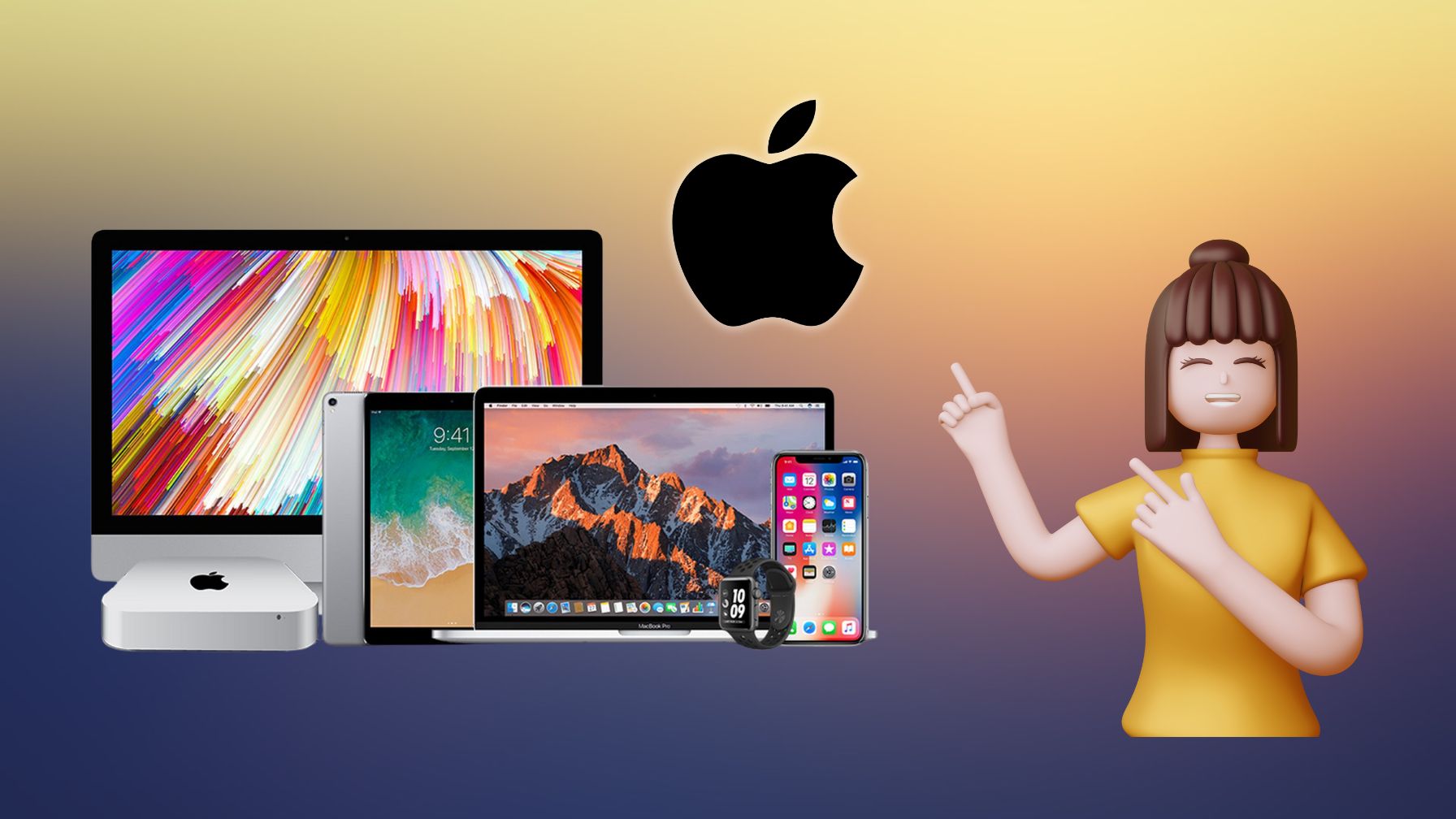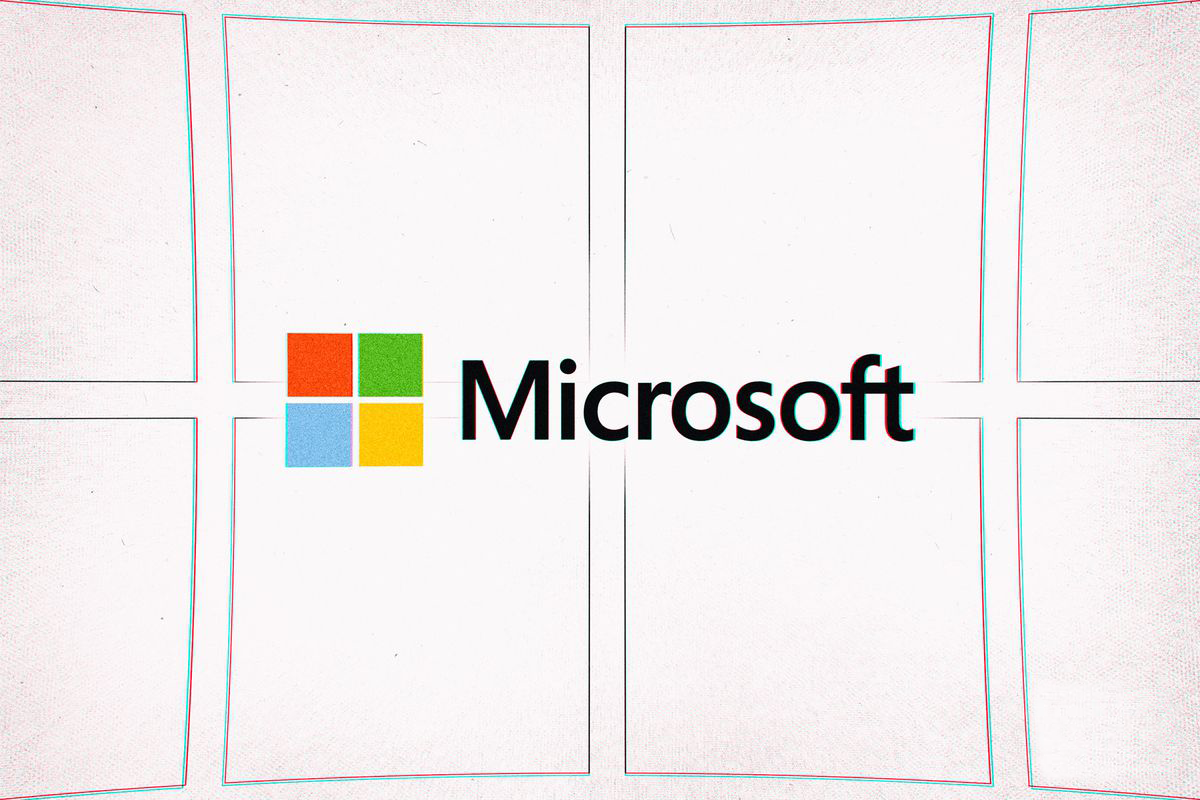WHAT WE HAVE ON THIS PAGE
The global educational toys market is projected to reach USD 146.7 billion by 2033, up from USD 59.2 billion in 2023, growing at a strong compound annual growth rate (CAGR) of 9.5% from 2024 to 2033. This growth signals significant opportunities for both innovation and investment in the sector. In 2023, North America dominated the market, holding a leading share of 36.5%, with total revenues amounting to USD 21.6 billion.
Technological advancements are profoundly reshaping the educational toys landscape, with a notable surge in smart toys that incorporate AI technologies to create interactive learning experiences. Companies are leveraging these advancements to develop toys that are not only entertaining but also educational, enhancing cognitive development through play. For example, touch-sensitive technologies and AI-integrated toys are gaining traction, offering personalized learning experiences that adjust to the child’s developmental pace.
Adoption rates in the market are buoyed by a deepening consumer appreciation for educational outcomes associated with toy play. Parents are increasingly selecting toys that contribute to their children’s cognitive and motor skills development, evident in the high demand for motor skills toys and STEM-related products. This trend is supported by the market’s distribution dynamics, where offline stores still dominate due to their ability to offer immediate, tangible product experiences, crucial for buyers wanting to assess toy quality and educational value firsthand.

Investment opportunities in the educational toys market are abundant, with a significant focus on eco-friendly products and innovations that safely engage children. The industry is witnessing a shift toward green toys, driven by consumer demand for products made from sustainable materials and a global push toward environmental consciousness. Investment in these areas, along with continuous innovation in product design and technology integration, presents lucrative prospects for new and existing players in the market.
Time to Invest
According to a recent survey by the Toy Association in 2023, an impressive 94% of parents recognize the essential role of toys in child development. Furthermore, 91% believe that educational toys are crucial for enhancing their child’s learning and growth. These figures highlight the deep value that toys add to early education and developmental stages, showing that toys are more than just playthings; they are vital tools that aid in the cognitive and emotional development of children.
China is a powerhouse in the toy manufacturing industry, home to about 90% of the world’s toy factories. This significant concentration makes China a central hub for toy production, affecting global supply chains and logistics. The dominance of Chinese manufacturing not only ensures a steady supply of toys worldwide but also sets the pace for industry standards and innovations.
In the United States, the market for toys heavily depends on imports, with 97% of toys sold being sourced from abroad. This high dependency underlines the U.S.’s reliance on international markets, especially China, to meet its substantial consumer demand. Despite this, the U.S. still boasts a strong domestic sector valued at $2 billion, showing a vibrant industry capable of sustaining jobs and contributing to the economy through specialty manufacturing.
Moreover, the U.S. toy market is a significant contributor to the national economy, adding about USD 98.2 billion annually. With over 21,200 online sales businesses thriving, this sector illustrates a dynamic market with a robust demand for toys. Across the Atlantic, the U.K. is also seeing healthy growth in this sector, with expected revenues in the Toys & Games market to hit around USD 5.5 billion in 2024.
Key Takeaways
- The Global Educational Toys Market is projected to grow significantly, reaching USD 146.7 billion by 2033, up from USD 59.2 billion in 2023. This marks a strong CAGR of 9.5% from 2024 to 2033.
- In 2023, the Motor Skills Toys segment dominated the market, holding a 27.1% share. These toys play a key role in child development by improving hand-eye coordination and fine motor skills.
- The Below 4 Years segment captured a significant 54.8% market share in 2023. Parents are increasingly investing in early childhood educational toys to aid cognitive and sensory development.
- Despite the rise of e-commerce, Offline Stores accounted for 64.4% of total sales in 2023. Many parents prefer physical stores to evaluate the quality and safety of toys before purchasing.
- In 2023, North America held a dominant 36.5% market share, generating revenues of USD 21.6 billion. High consumer spending, a strong presence of top toy brands, and increased awareness of educational toys are driving growth in this region.
North America Educational Toys Market
North America’s dominance in the educational toys market, holding a significant 36.5% share with revenues of USD 21.6 billion in 2023, can be attributed to several key factors. Firstly, the region boasts a high level of disposable income among consumers, which facilitates greater spending on educational materials, including toys. Families in North America are increasingly investing in educational resources that contribute to the cognitive and social development of their children, viewing these toys as essential tools for early education.
Another contributing factor to North America’s market leadership is the strong emphasis on educational and technological advancements. The region is home to numerous companies that are pioneers in integrating technology with traditional learning tools. These companies often collaborate with educators to develop toys that are not only engaging but also enhance learning through interactive content. This integration of technology and education appeals to modern parents who are keen on providing their children with resources that prepare them effectively for a digital future.

Report Segmentation
Product Type Analysis
In the vibrant landscape of the Educational Toys Market, the Motor Skills Toys segment emerged as a frontrunner in 2023, securing a substantial 27.1% share of the market. This segment’s popularity underscores a growing recognition of the critical role these toys play in early childhood development. Motor skills toys, which include puzzles, building blocks, and other hands-on activities, are pivotal in enhancing fine and gross motor skills among young learners. Their ability to blend skill development with fun makes them a top choice for parents and educators aiming to foster essential abilities in children from a very young age.
Age Group Analysis
Shifting the focus to different age groups within the same market reveals another compelling trend. The segment for children Below 4 Years old held a commanding lead, accounting for over 54.8% of the market in 2023. This significant figure highlights the critical importance that parents and caregivers place on educational toys for the very young.
The preference for educational toys in this age bracket suggests a proactive approach to learning, where the foundation for cognitive, social, and emotional skills is laid early. Toys designed for this age group are not only safe and engaging but are specifically geared towards stimulating the developmental milestones typical of toddlers and preschoolers.
The dominance of both motor skills toys and products aimed at children below four years illustrates a clear market trend towards educational materials that support early developmental stages. As awareness of the benefits of educational toys continues to grow, these segments are likely to maintain their market stronghold. This trend is supported by a broader move towards mindful parenting and education reform, where the emphasis is on nurturing well-rounded individuals right from the outset.
Distribution Channel Analysis
In the dynamic Educational Toys Market of 2023, Offline Stores took center stage, commanding a significant 64.4% share. This dominant position highlights the enduring appeal and reliability of brick-and-mortar retail outlets in the sale of educational toys. Despite the rapid growth of e-commerce, many consumers prefer to purchase these products in-store. This preference can be attributed to several key factors.
Firstly, the tactile nature of educational toys makes physical inspection a valuable part of the purchasing process. Parents and educators often prefer to see, touch, and feel the quality and suitability of toys before buying, ensuring they meet their specific educational and safety standards. Moreover, offline stores provide immediate gratification – the ability to take a product home the same day—which is particularly appealing when shopping for children.
Secondly, offline stores offer a personal shopping experience. Knowledgeable staff can assist customers in selecting the most appropriate toys based on a child’s age, developmental stage, and interests. This personalized interaction helps in building consumer trust and satisfaction, contributing to the loyalty and repeat business that keep offline stores thriving.

Emerging Trends
- Sustainable and Eco-Friendly Products: The trend toward sustainability is shaping the educational toy market significantly. Manufacturers are increasingly using materials like recycled plastics, sustainably sourced wood, and other eco-friendly materials to craft toys. This not only appeals to environmentally conscious consumers but also aligns with global sustainability goals.
- Embracing the Kidult Market: Adults purchasing toys either for nostalgia, stress relief, or as collectors is a notable trend. This market segment is seeing growth, with products like advanced LEGO sets and collectible figures catering to this demographic, demonstrating the broadening appeal of toys beyond traditional young audiences.
- Integration of Cutting-Edge Technologies: Toys that incorporate advanced technologies such as AI and AR/VR are becoming increasingly popular. These toys offer interactive experiences that are not only fun but educational, helping children develop digital literacy and problem-solving skills at an early age.
- Focus on STEM and Coding Toys: STEM toys, which focus on science, technology, engineering, and math concepts, continue to dominate the educational toy market. These toys are designed to enhance critical thinking and problem-solving skills, preparing children for the technological challenges of the future.
- Personalized and Adaptive Learning: Toys that adapt to a child’s learning pace and style are becoming more prevalent. These toys can adjust their difficulty levels and present new challenges based on the child’s interactions, offering a customized learning experience that grows with the child.
Top Use Cases
- Hands-On Learning Tools: Toys like building sets, electronic circuits, and robotics kits provide hands-on learning opportunities that engage children in active problem-solving and experimentation, fostering both creativity and technical skills.
- Environmental Education: Eco-friendly toys not only use sustainable materials but often incorporate educational aspects about the environment. For example, garden planting kits can teach children about botany and the importance of taking care of our planet.
- Interactive Learning with Tech Toys: Augmented reality toys and apps that teach coding or other digital skills offer interactive learning opportunities that are engaging and fun, making them excellent tools for both in-home and educational settings.
- Inclusive and Diverse Toys: The market is seeing an increase in toys that reflect a broad spectrum of cultural, physical, and neurological diversity. These toys help foster empathy and understanding from a young age, making playtime more inclusive.
- Cognitive Development for All Ages: With the rise of the kidult market and products aimed at older demographics, educational toys are now being designed to enhance cognitive function across all ages, including options for adults and seniors focused on memory care and strategic thinking.
Key Market Segment
Product Type
- Motor Skills Toys
- STEM Toys
- Role Play Toys
- Arts & Crafts
- Games & Puzzles
- Other Product Types
Age Group
- Below 4 Years
- 4 to 8 Years
- Above 8 Years
Distribution Channel
- Online Platforms
- Offline Stores
Top Key Players in the Market
- LEGO Group
- Mattel, Inc.
- Hasbro, Inc.
- VTech Holdings Limited
- Melissa & Doug, LLC
- Spin Master Corp.
- Sphero, Inc.
- Ravensburger AG
- MindWare, Inc.
- LeapFrog Enterprises, Inc.
- Other Key Players
ABOUT AUTHOR
Yogesh Shinde is a passionate writer, researcher, and content creator with a keen interest in technology, innovation and industry research. With a background in computer engineering and years of experience in the tech industry. He is committed to delivering accurate and well-researched articles that resonate with readers and provide valuable insights. When not writing, I enjoy reading and can often be found exploring new teaching methods and strategies.










